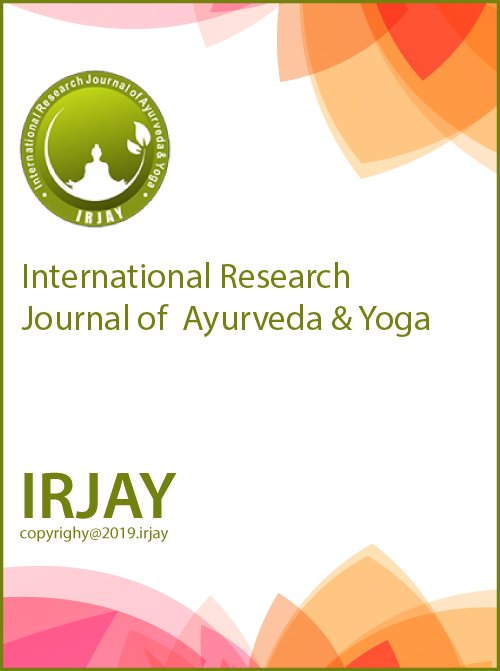A Comparative Clinical study of Lakshadi Lepa and Panchanimba Ghana vati in Mukhdooshika w.s.r to Acne Vulgaris
DOI:
https://doi.org/10.48165/IRJAY.2024.70401Keywords:
kumkumadi taila nasyam, MukhdushikaAbstract
In Ayurveda, mukhadushika is mentioned under the heading of Kshudra rogas, characterized by Shalmali thorn-like eruption on the face due to vitiation of kapha, vata, and rakta in adolescence, called as mukhdushika/yuvan pidika. In this study, 2 trial drugs were taken for Mukhdooshika which has been mentioned in Samhitaas. Aims and Objective: This study is to assess the efficacy of Lakshadi Lepa and Panchanimbadi Ghana Vati along with the comparison with Acnovin ointment and capAcnovin. Materials and Methods: This study was an open randomized control clinical trial. Total 30 patients were selected and divided into 2 groups randomly 15 patients in each group, to compare the clinical efficacy of study drug Group A with study drug Group B along with kumkumadi taila nasyam for 1 month in the management of Mukhdooshika (Acne). The results of therapy have been evaluated by statistical methods in 2 steps. 1st step is evaluating within the group before and after treatment in both groups separately and in 2nd step the evaluations of inter-group/between 2 groups evaluation of both therapies. Results: In both study and control group, 0% of patient showed excellent relief. 6.66% and 13.33% patients showed marked relief in study and control groups, respectively. 60% and 40% patients showed moderate relief in study and control groups, respectively. 33.33% and 46.66% patients showed mild relief in study group and control group, respectively, and the percentage of no relief patient was zero in both groups.
Downloads
References
Charaka Samhita, Sidhisthana. 5th ed., Ch. 12. Shloka-53-54.
Varanasi: Chaukambha Sanskrit Sansthana; 2014. p. 738.
Sushruta Samhita, Nidana Sthana. Shloka 39. 7th ed., Ch. 13.
Varanasi: Chaukambha Surabharati; 2008. p. 824, 323.
Acharya YT, editor. Nibandh Samgraha, Commemtary on Sushrut
Samhita. Varanasi: Chaukhamba; 1980.
Zouboulis CC. Acne Dermatology, Symposium at the World Congress
of Dermatology Paris. Vol. 206. Germany: S Karger AG; 2002.
Kasper DL, Braunwald E, Fauci AS, Hauser S, Longo D, Jameson JL.
Harrison’s Principles of Internal Medicine. 16th ed., Vol. 1. United
States: McGraw Hill; 2012. p. 1299, 295.
Nidana M. Kshudra Roga Nidana 55, Shlokaa 33. 13th ed. Varanasi:
Chaukhamba Sanskrit Sansthan; 2001. p. 508, 208.
Ashtanga Hridaya. Uttarsthna. Shloka 5. 9th ed., Ch. 31. Varanasi:
Chaukambha Orientalia; 2005. p. 956, 888.
Astanga Sangraha. Uttarsthana. Shloka 60. 9th ed., Ch. 44. Varanasi:
Chaukhambha Prakashan; 2005.
Sharangadhara Samhita. Shlokaa -14. Amarbharati Prakashana. 2nd ed.,
Ch. 11. Uttarakhanda: Chaukambha Orientalia; 1998.p. 556, 417.
Chakradatta. Kshudra Roga Chikitsa. 48 Shloka. 1st ed. Varanasi:
Chaukhamba Orientalia; 2007. p. 439.

